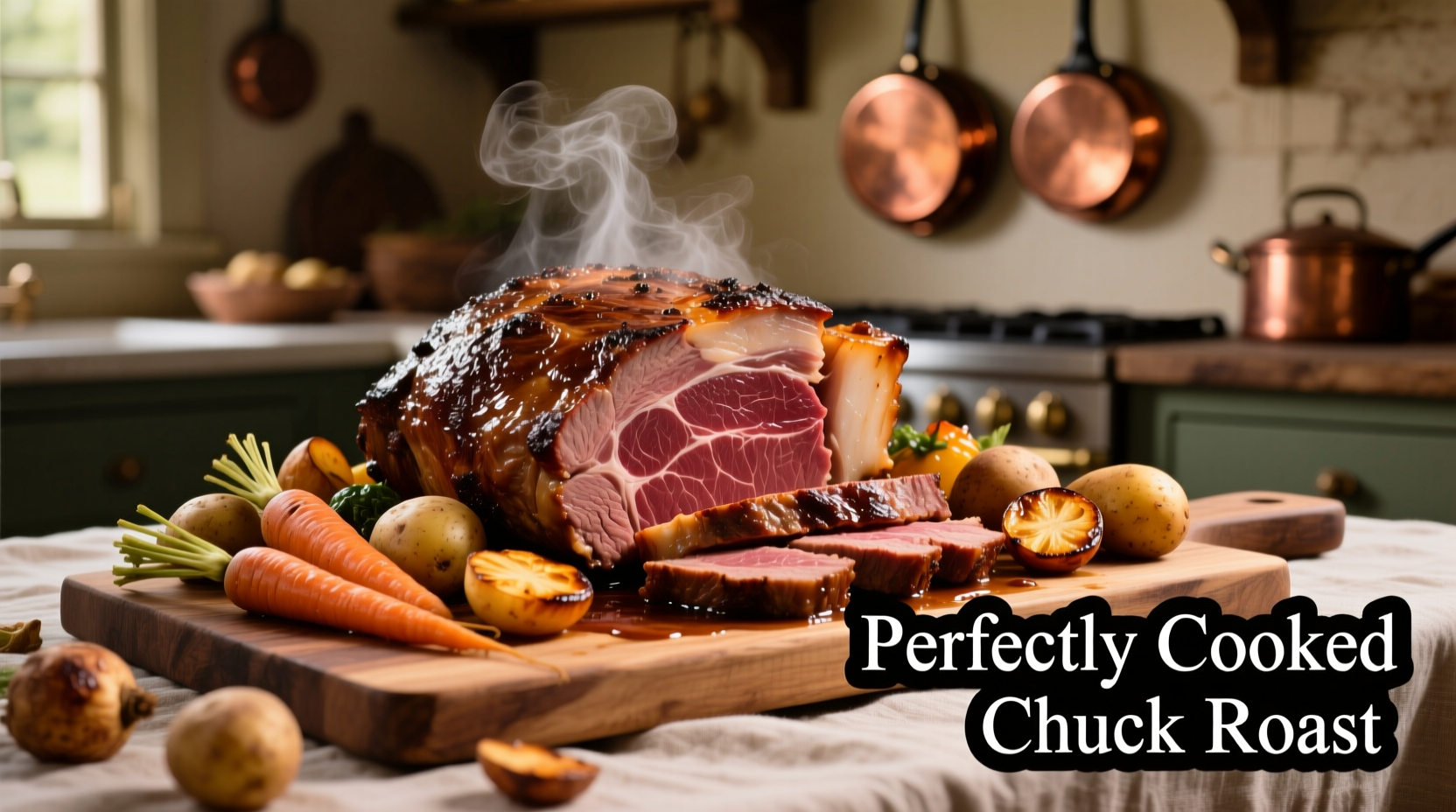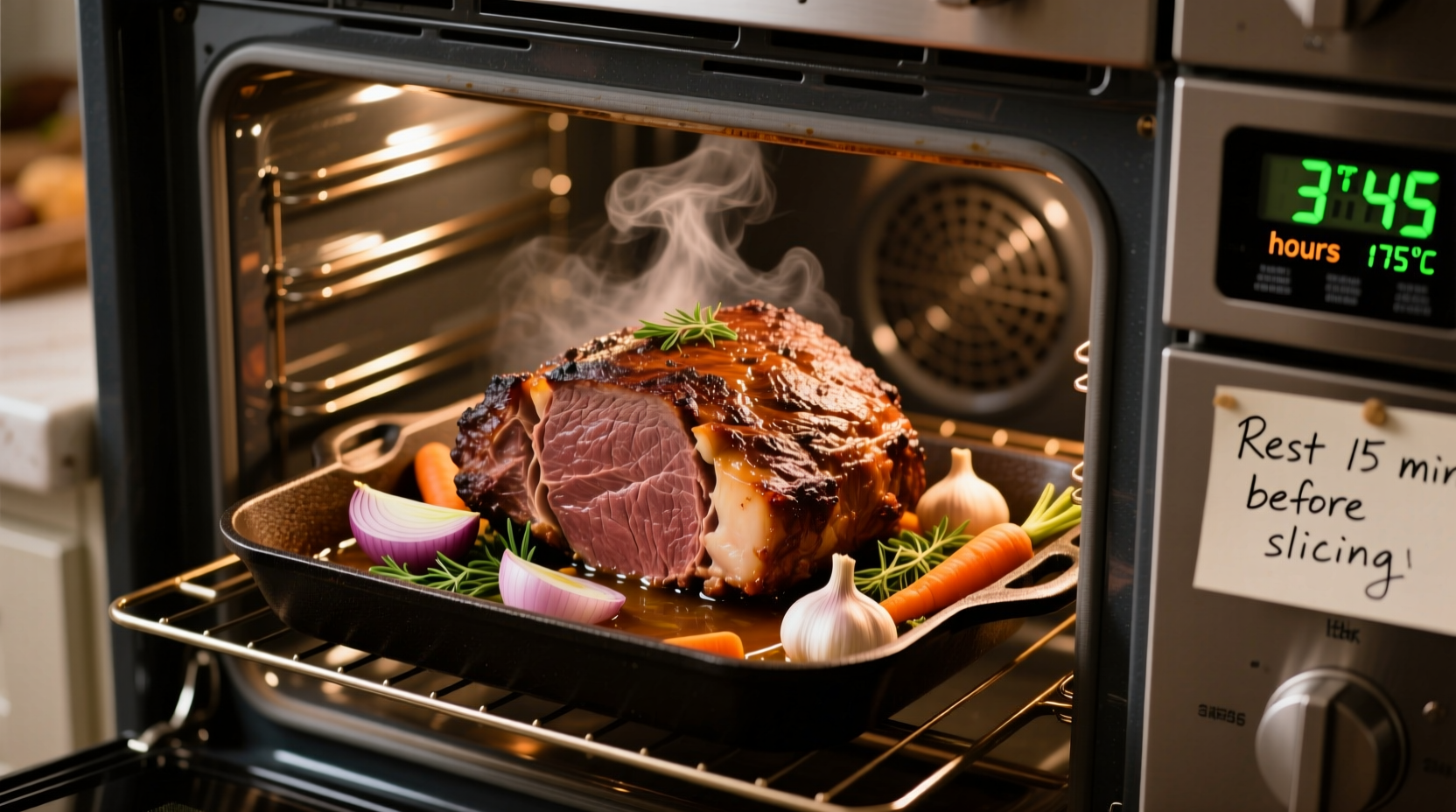Perfectly Cooked Chuck Roast: Your Complete Guide
Nothing beats the rich, melt-in-your-mouth texture of a properly cooked chuck roast. As a cut from the shoulder area of the cow, chuck roast contains abundant connective tissue that transforms into succulent gelatin when cooked slowly at the right temperature. This guide delivers precise timing, science-backed techniques, and professional tips to ensure your chuck roast turns out perfectly tender every time you cook it at 350°F.

Before You Start: Essential Preparation
Proper preparation sets the foundation for a successful roast. Professional chefs consistently emphasize these critical steps:
- Bring to room temperature: Remove roast from refrigerator 60-90 minutes before cooking for even heat distribution
- Dry the surface: Pat thoroughly with paper towels to ensure proper browning
- Season generously: Apply salt at least 45 minutes before cooking to enhance flavor penetration
- Sear properly: Brown all sides in a hot skillet before oven transfer (5-7 minutes per side)
According to the USDA Food Safety and Inspection Service, proper searing creates the Maillard reaction that develops complex flavor compounds essential for a delicious finished product.
Exact Cooking Times by Weight
The most reliable method for determining cooking time combines weight-based estimates with internal temperature verification. Here's the professional standard:
| Roast Weight | Estimated Time at 350°F | Target Internal Temperature |
|---|---|---|
| 2-3 pounds | 1 - 1.5 hours | 195-205°F (90-96°C) |
| 3-4 pounds | 1.5 - 2 hours | 195-205°F (90-96°C) |
| 4-5 pounds | 2 - 2.5 hours | 195-205°F (90-96°C) |
| 5-6 pounds | 2.5 - 3 hours | 195-205°F (90-96°C) |
Why Temperature Matters More Than Time
While time provides a useful estimate, internal temperature is the definitive indicator of doneness. The National Center for Home Food Preservation confirms that connective tissue in chuck roast fully breaks down between 195-205°F (90-96°C). Below this range, the meat remains tough; beyond it, the roast may become dry.
Use an instant-read thermometer inserted into the thickest part of the roast, avoiding bone or fat pockets. Check temperature 30 minutes before expected completion time, then every 15 minutes thereafter.
Context Matters: When Standard Guidelines Don't Apply
Several factors can alter cooking time significantly. Be aware of these context boundaries:
- Frozen vs. thawed: Frozen roasts require 50% longer cooking time and often cook unevenly
- Oven accuracy: Most home ovens vary by 25°F - use an oven thermometer for precision
- Pan type: Dark metal pans cook 10-15% faster than glass or ceramic
- Roast shape: Uniform shapes cook more evenly than irregular cuts
- Starting temperature: A roast straight from the fridge adds 20-30 minutes to cooking time
The Critical Resting Phase
Never skip resting! This essential step allows redistributed juices to be reabsorbed. Professional kitchens follow this standard:
- Cover loosely with foil
- Rest for 15-20 minutes minimum (30 minutes for roasts over 4 pounds)
- Temperature will continue rising 5-10°F during resting
According to research published in the Journal of Meat Science, resting prevents up to 40% of the roast's precious juices from escaping when sliced.
Troubleshooting Common Issues
Even with careful planning, challenges arise. Here's how to handle them:
Roast Cooking Too Fast
If your roast is browning too quickly but not reaching proper internal temperature:
- Reduce oven temperature to 325°F
- Cover tightly with foil to trap moisture
- Add 1/4 cup liquid (broth or water) to the pan
Roast Not Tender Enough
If your roast hasn't reached the proper tenderness:
- Return to oven and cook in 15-minute increments
- Check temperature every 15 minutes
- Consider adding liquid and covering for additional moisture
Pro Tips for Exceptional Results
- Place roast fat-side up to allow natural basting during cooking
- Add aromatic vegetables (onions, carrots, celery) to the pan for flavor infusion
- For extra richness, add 1/2 cup red wine or beef broth to the pan
- Use a roasting rack to prevent bottom from steaming in its own juices
- Check oven temperature with a separate thermometer for accuracy
Frequently Asked Questions
Should I cover chuck roast while cooking at 350°F?
For the first half of cooking, leave uncovered to develop a flavorful crust. For the second half, cover with foil to prevent excessive browning while connective tissue breaks down. This two-stage approach delivers both perfect texture and rich flavor development.
Can I cook chuck roast at 350°F without searing first?
You can, but you'll miss out on critical flavor development. Searing creates the Maillard reaction that produces complex flavor compounds. The American Scientist confirms searing adds hundreds of additional flavor compounds that significantly enhance the final dish.
Why is my chuck roast still tough after cooking at 350°F?
Chuck roast requires reaching 195-205°F internally for connective tissue to fully break down. If your roast remains tough, it likely didn't reach proper internal temperature. Use a reliable meat thermometer rather than relying solely on time estimates.
Can I cook chuck roast at 350°F in a slow cooker instead?
While possible, slow cookers operate at lower temperatures (typically 175-280°F) that produce different texture results. Oven roasting at 350°F creates superior browning and more concentrated flavors compared to slow cooking methods.











 浙公网安备
33010002000092号
浙公网安备
33010002000092号 浙B2-20120091-4
浙B2-20120091-4